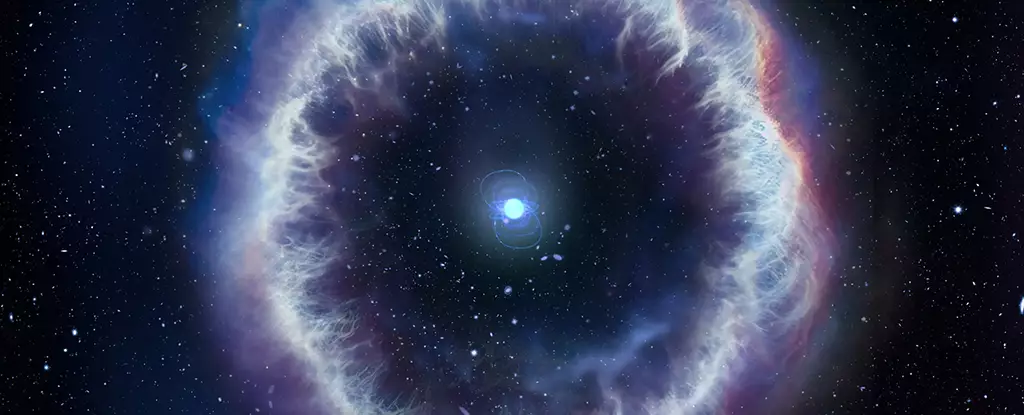Recent research conducted by the Italian National Institute for Astrophysics (INAF) has shed new light on the enigmatic phenomenon of Fast Radio Bursts (FRBs). These sudden and intense blasts of radio wave energy from deep space have puzzled astrophysicists for years, but a closer look at FRB 20201124A has provided valuable insight into their origins. The team of researchers focused on a persistent radio source (PRS) located near the FRB, which led to intriguing discoveries regarding the mysterious source of these powerful signals.
One of the key findings of the study was the presence of a plasma bubble surrounding the source of FRB 20201124A. This ionized nebula, consisting of electrically charged gas and dust, is believed to play a crucial role in generating the intense bursts of radio wave energy. By analyzing the radio emissions from the PRS, researchers were able to establish a connection between the FRB and the surrounding plasma bubble, providing a deeper understanding of the mechanisms at play.
The study also explored the possible origins of FRBs, pointing towards a young magnetar or a binary system as the likely sources of the mysterious signals. Magnetars, ultra-dense and ultra-magnetic stars, are considered capable of generating the immense energy required to trigger FRBs. Alternatively, a binary system featuring a neutron star or a black hole could also be responsible for producing these intense bursts of radio wave energy. The presence of a plasma bubble surrounding the source further supports these theories, highlighting the complex interplay of celestial phenomena involved in generating FRBs.
The research utilized cutting-edge technology such as the Very Large Array (VLA) Radio Telescope in New Mexico, the Northern Extended Millimeter Array (NOEMA), and the Gran Telescopio Canarias telescopes to gather crucial data on FRB 20201124A. These advancements in radio astronomy enabled researchers to observe the system with unprecedented detail and clarity, allowing for new insights into the mechanisms behind FRBs. The high-resolution data obtained from these telescopes provided a clearer picture of the source and its surrounding plasma bubble, supporting the hypothesis of a young magnetar or a binary system as the origin of the FRB signals.
By delving into the intricacies of FRB 20201124A, researchers have uncovered valuable information that contributes to our understanding of these mysterious cosmic phenomena. While many questions remain unanswered, the study represents a significant step towards unraveling the mysteries of FRBs and their origins. The combination of theoretical models and observational data has brought us closer to deciphering the enigma of fast radio bursts, paving the way for future discoveries in the field of astrophysics.
The latest research on FRB 20201124A has provided a fascinating glimpse into the complex mechanisms behind these intense bursts of radio wave energy. By studying the connection between the FRB and the surrounding plasma bubble, researchers have made significant strides in unraveling the mysteries of fast radio bursts. With further advancements in radio astronomy and continued research efforts, we may soon unlock the secrets of these elusive cosmic phenomena, shedding light on the mysteries of the universe.


Leave a Reply